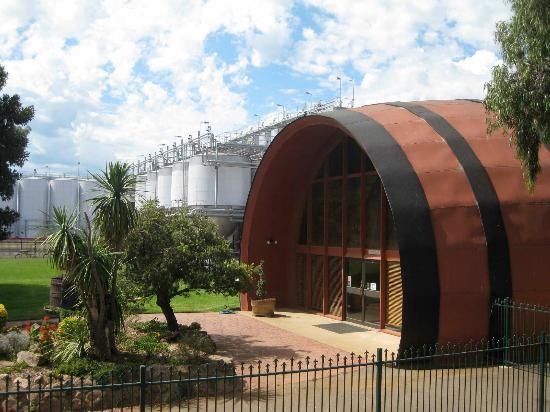I received an Australian email last week, where an Oz winemaker feared for his industry because they were losing market share in the more expensive segments. I would guess he’s right. From what I’ve seen the problem is less in the more expensive wines but in the cheap wines. Most of the under $20 wines I’ve been drinking seem to me to be slipping gently into the void, slowly but surely becoming worse and worse.
[related_content slugs=”dr-booze-on-the-subtlety-of-pinot-blanc,dr-booze-on-italian-wines-priced-to-drink,dr-booze-takes-on-the-intimidatingly-named-gewurztraminer-wine,dr-booze-switches-to-beer-fruit-beers-that-is” description=”More from James Romanow” position=”right”]
Some of this is due to their particular style. Americans are always willing to chase the latest trend but there is enough Brit in the Australian makeup to keep them worrying about loss of tradition. Their wines are still dry for the most part, but they’re big, viscous wines that explode out of the glass. To make a wine like this for not much money (and remember they are as plagued as the rest of the world with the romance of making wine and therefore have stupid land prices that demands overpriced wines) requires more science than art.
There is another pressure on the Australians. Their dollar continues to be strong, which is knee capping their pricing policies. The pressure to produce grapes and wine to a price is squeezing margins. While it is vaguely possible there are small vineyards out there producing decent wines at this price point in Australia, if so they don’t have the production or business knowledge to have access to the distribution network.
I don’t really drink this category for many reasons, but a big one is a high probability of getting either a sinus response or a headache. I literally do not pour one of these without first swallowing a Claritin, and that seems a little peculiar to me. My guess is the yeast strains that Australians favour – the continent had no wild wine yeast strains – are trouble for me. To get around this problem I need aged wine, which immediately lets out any popular wine nation if youíre shopping under $30. (BTW Mt. Boucherie Summit, from the Okanagan fits this bill, 2008 for about $25, widely distributed. It’s a very dry Bordelais clone. Highly recommended.)
On the other hand any number of drinkers will not have my problem and will enjoy these wines. With that in mind, I raided the Australian aisle for non-Shiraz reds between $14 and $20, unscrewed the lot, and swallowed a Reactin. (The things I do for this job.)
The first thing that struck me was a rather yeasty odour from Wolf Blass Red Label. It smelt like nothing so much as homemade wine. This was not encouraging. It seemed to me that I needed further preparation. I retired to the bathroom for a second Reactin and an aspirin.
Suitably fortified I went through the class. I must hasten to say it was not all bad. In fact a couple of the wines were quite good. My favourite was McWilliam’s Hanwood Estate Cabernet Sauvignon. The bouquet was distinctly cleaner than the other wines, with great odours of black fruit. The palate was balanced, fresh, and to my pleasure slightly light. At under $15 this is quite a nice wine.
Wyndham Estate Bin 444, another pure Cabernet sauvignon was also fairly light, almost washed out. At the same time the palate was nicely tart, with great fruit. Both this and Hanwood Estate are nice food wines and if youíre on a budget and like New World wines these would be good wines to try.
Koonunga Hill from Penfold’s is a fairly famous wine from a brand that has a lot to lose by watering down their quality. It’s the blend of shiraz and cabernet much loved by their winemakers. Given the surplus of shiraz these days it also will have helped hold down the price.
Unfortunately some of the balancing of the wine, either for the screwcap or some other reason has a nasty side effect. The bouquet when freshly opened smelled distinctly of copper with little else apparent. (For detail on the problem see To Screw or Not to Screw) The palate was okay, probably around an 83 or 84 on the Parker scale, but there wasn’t a great deal about it that attracted me.
Wolf Blass Red Label, was much improved once the bottle had sat on the counter over night. The yeast smells cleared off leaving a bouquet of dark fruit, with some eucalyptus. It was also noticeably thicker than the other wines. If you’re new to wine, or coming off homemade wine this may be the choice that will suit you best.
McWilliam’s Hanwood Estate Cabernet Sauvignon, Australia, 2010. $14.75 ****
Wyndham Estate Bin 444 Cabernet Sauvignon, Australia, 2010. $14.54 ****
Penfold’s Koonunga Hill Shiraz Cabernet, Australia, 2011. $16.99 ****
Wolf Blass Red Label, Cabernet Merlot, Australia, 2012. $14.99 ***
–
James Romanow writes about wine and all things boozy for the Spectator Tribune. Follow him @drbooze.
